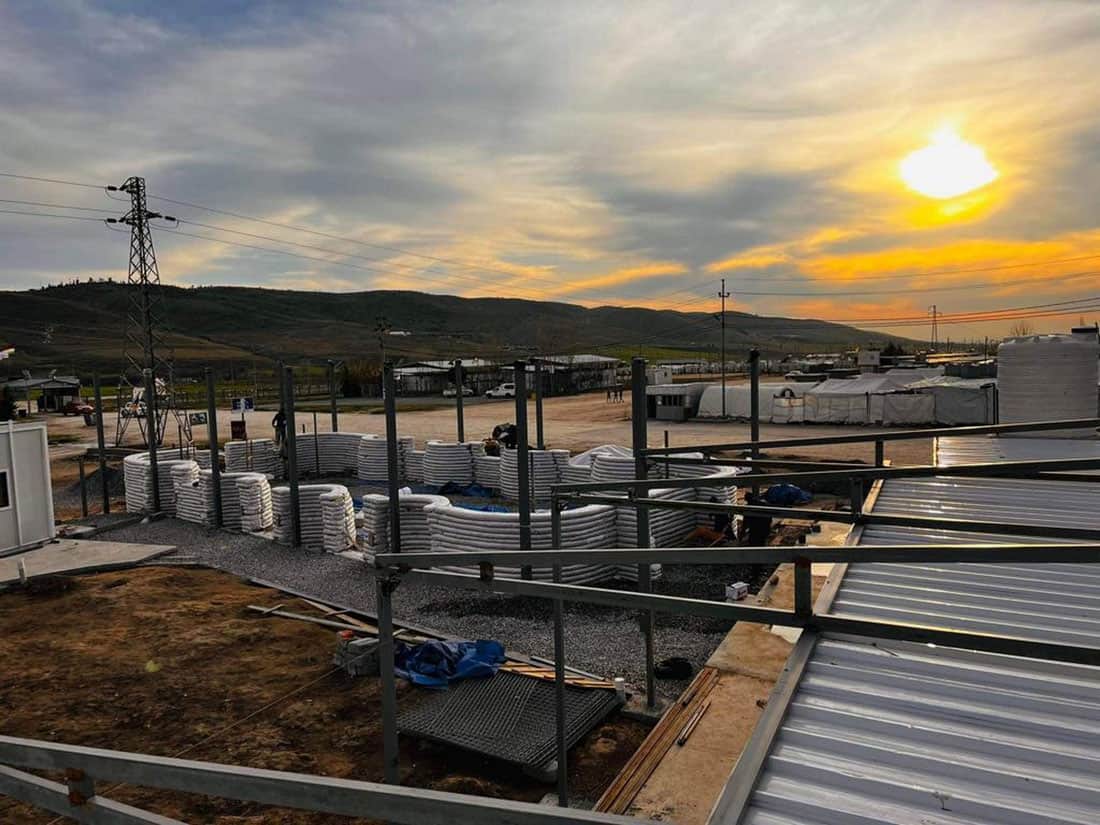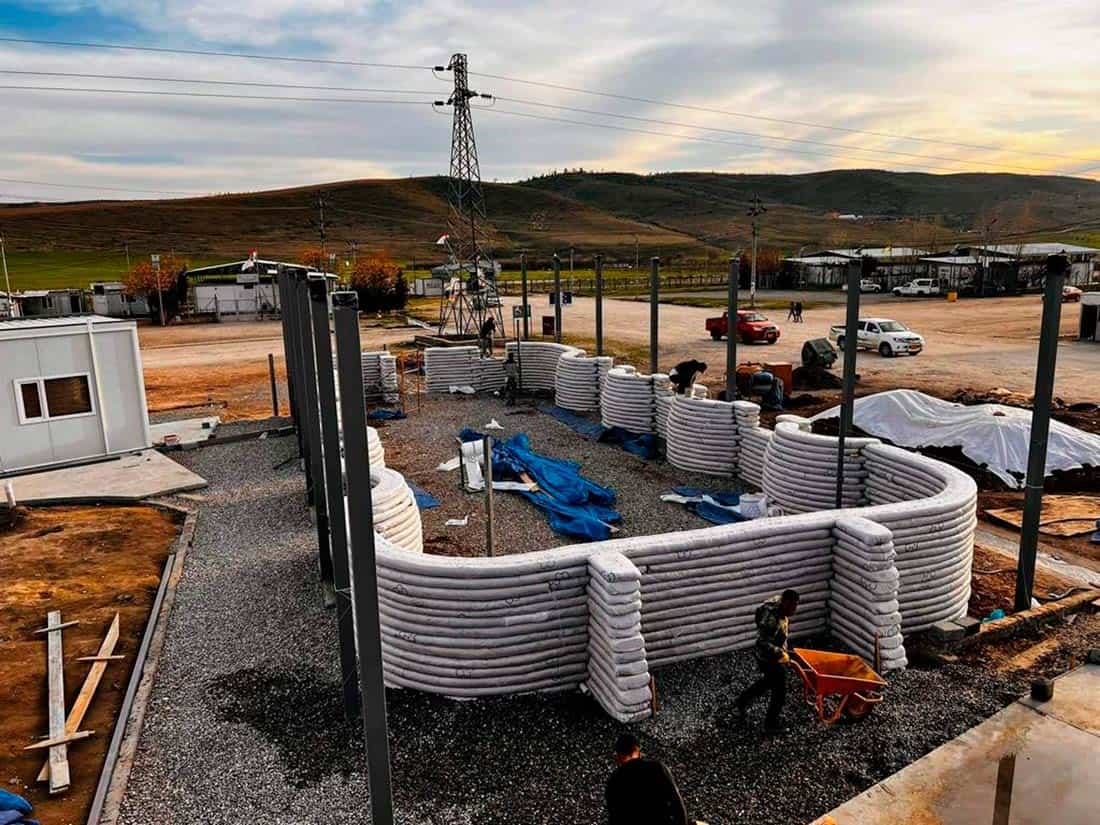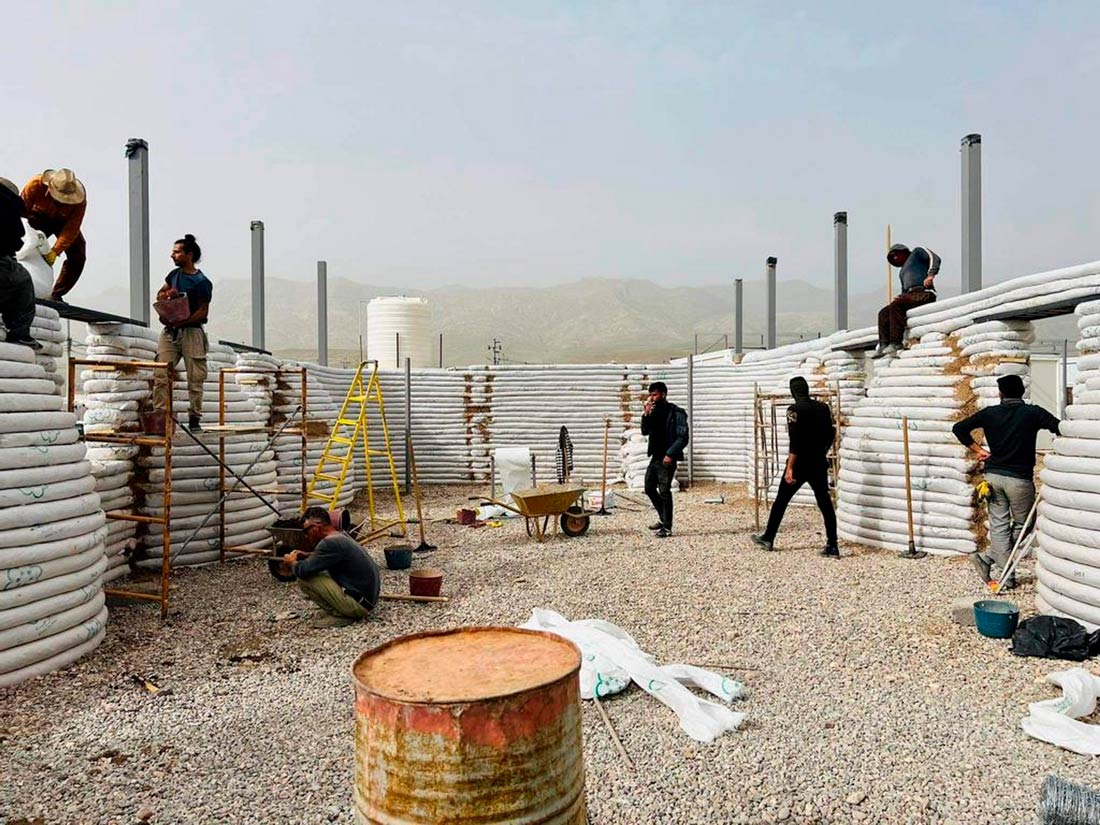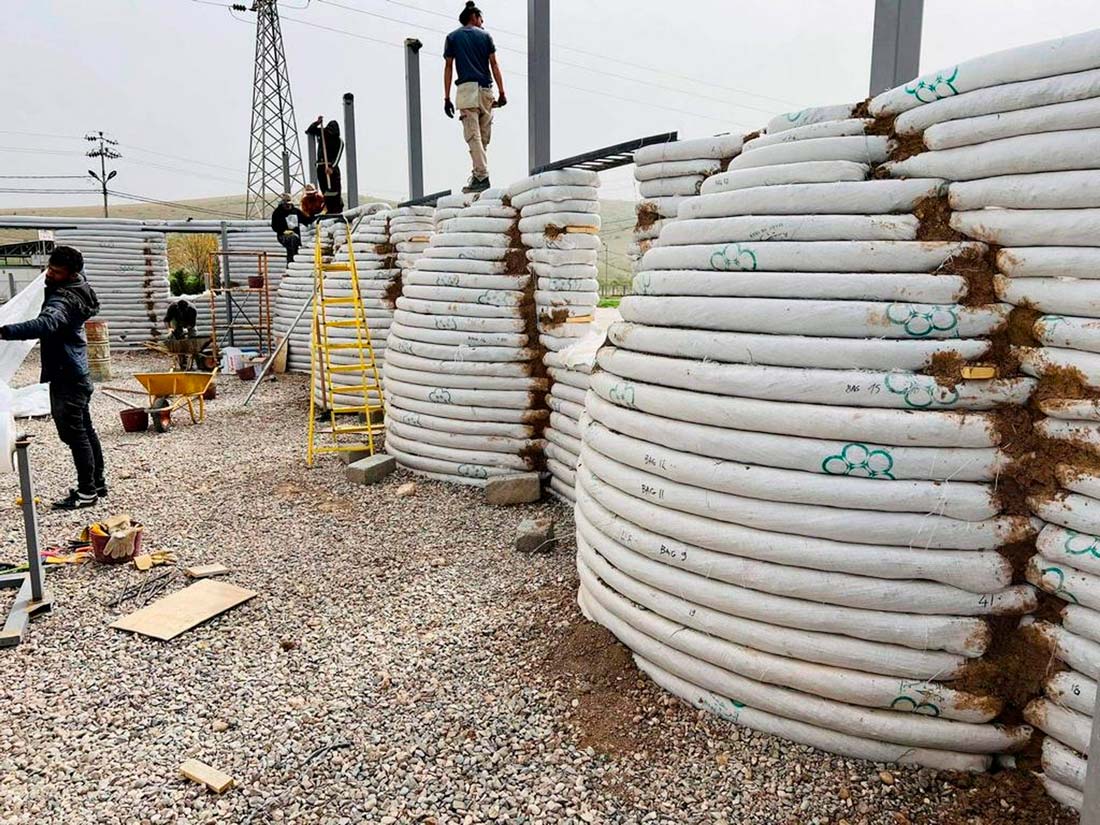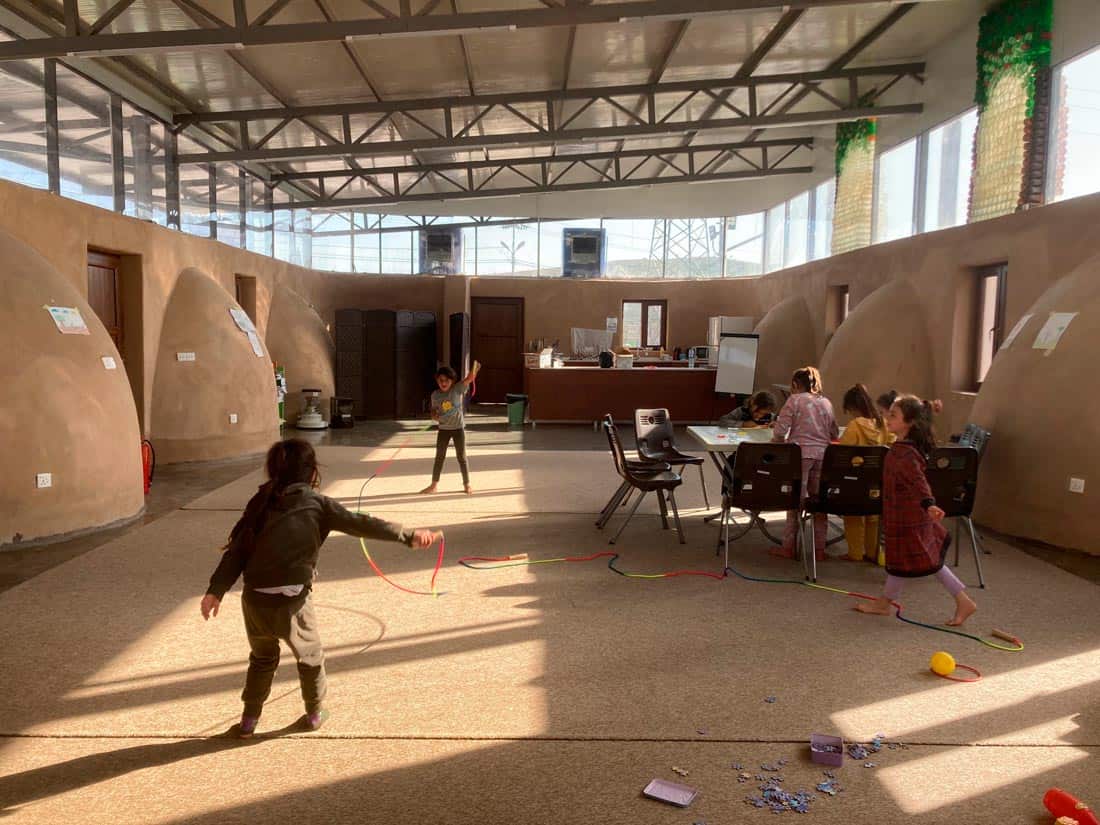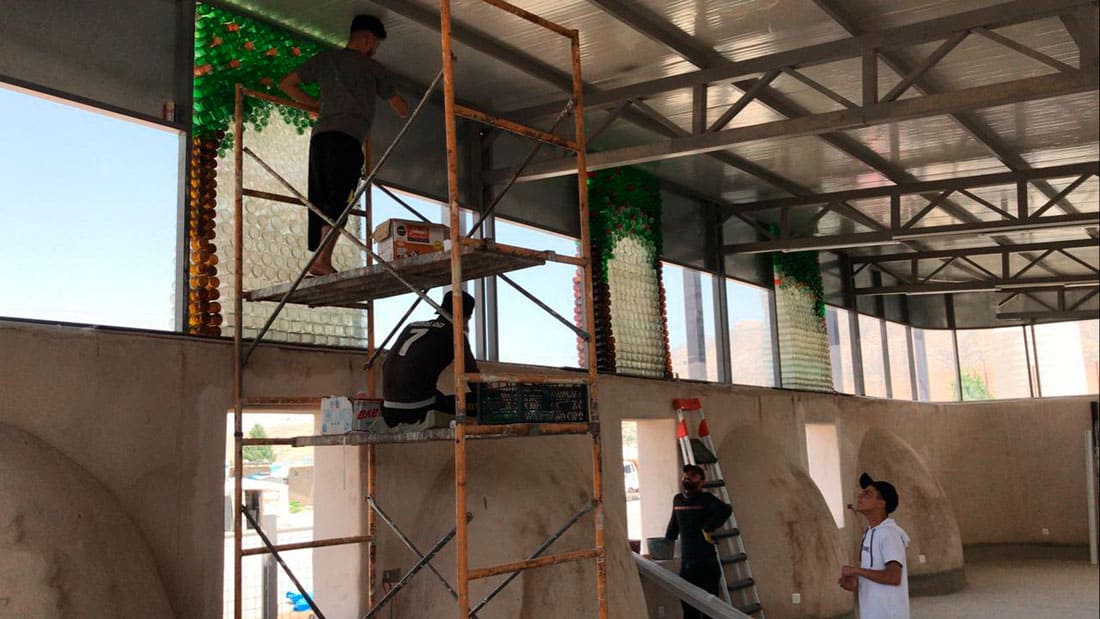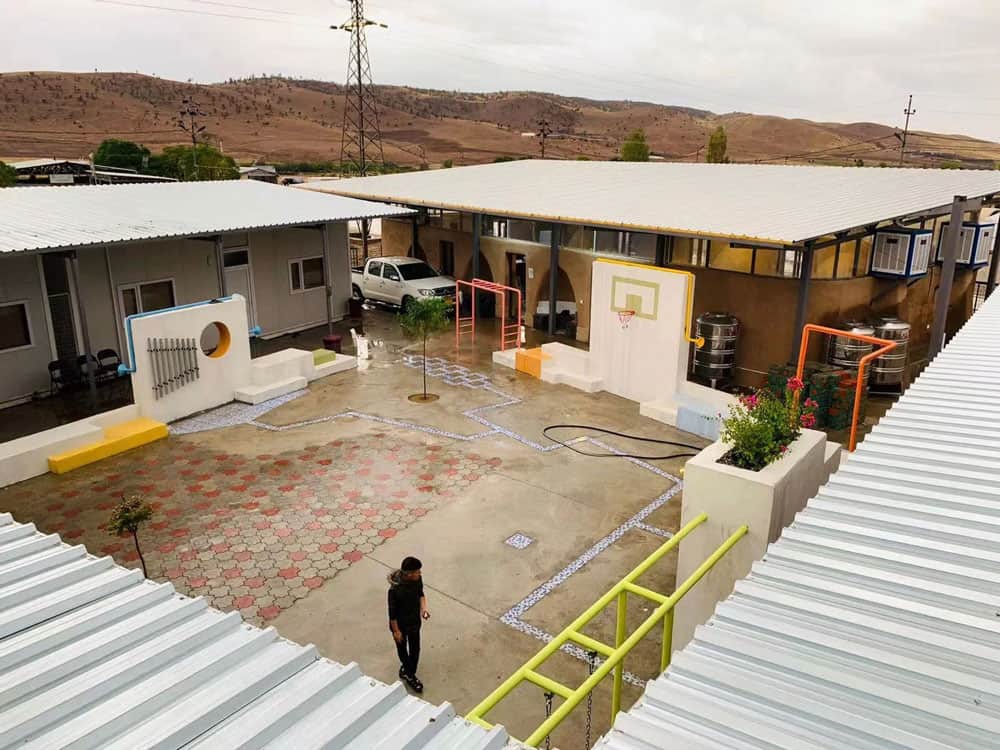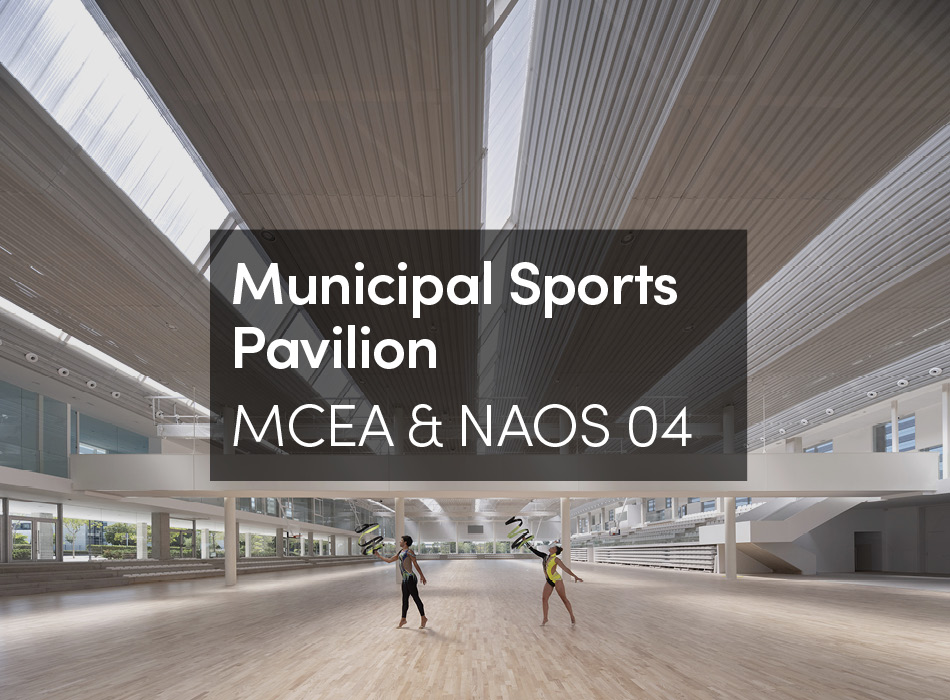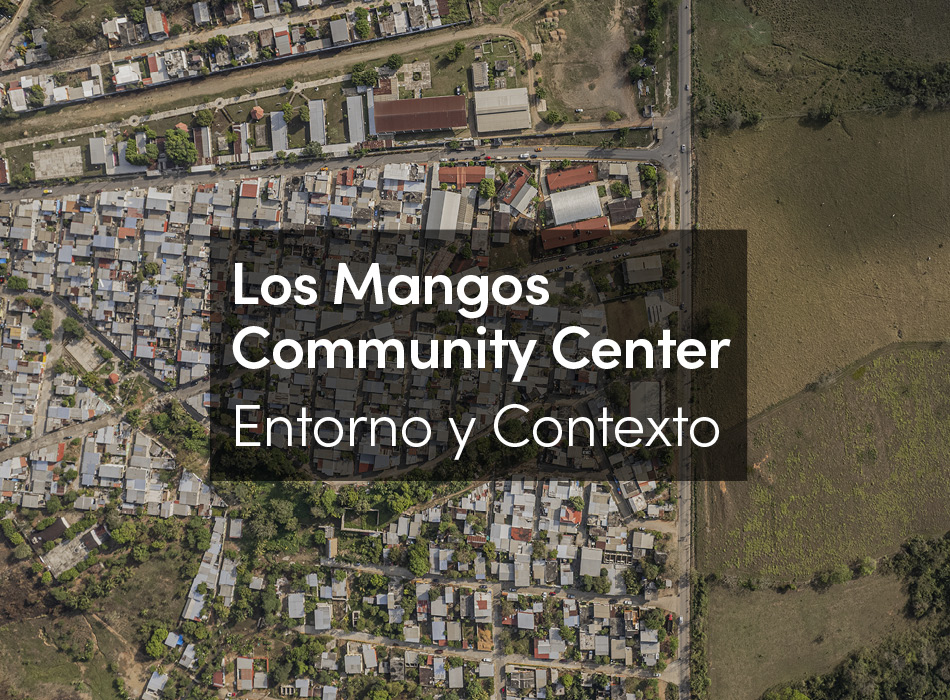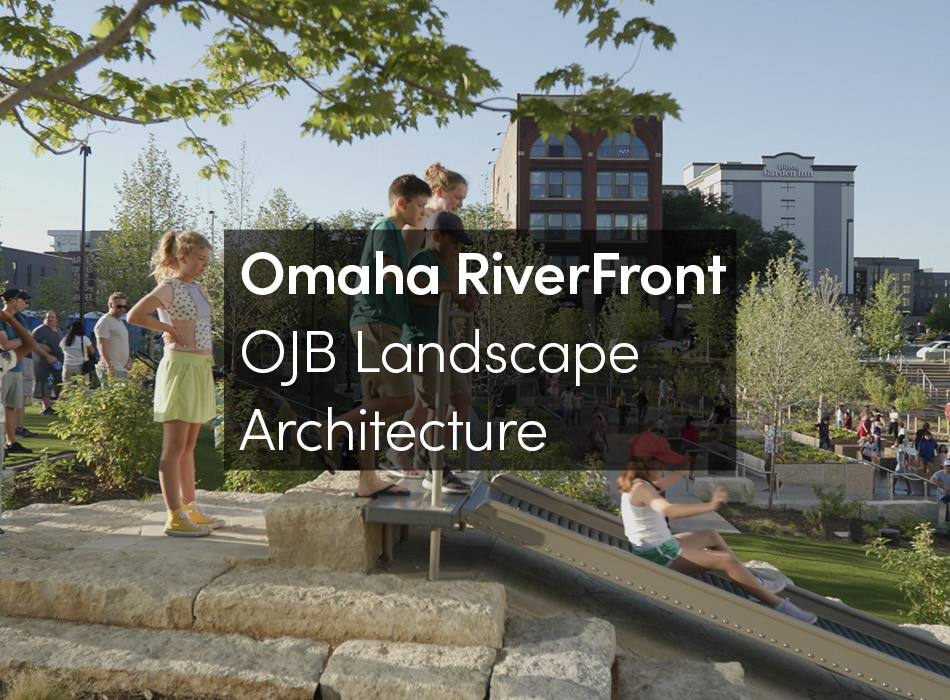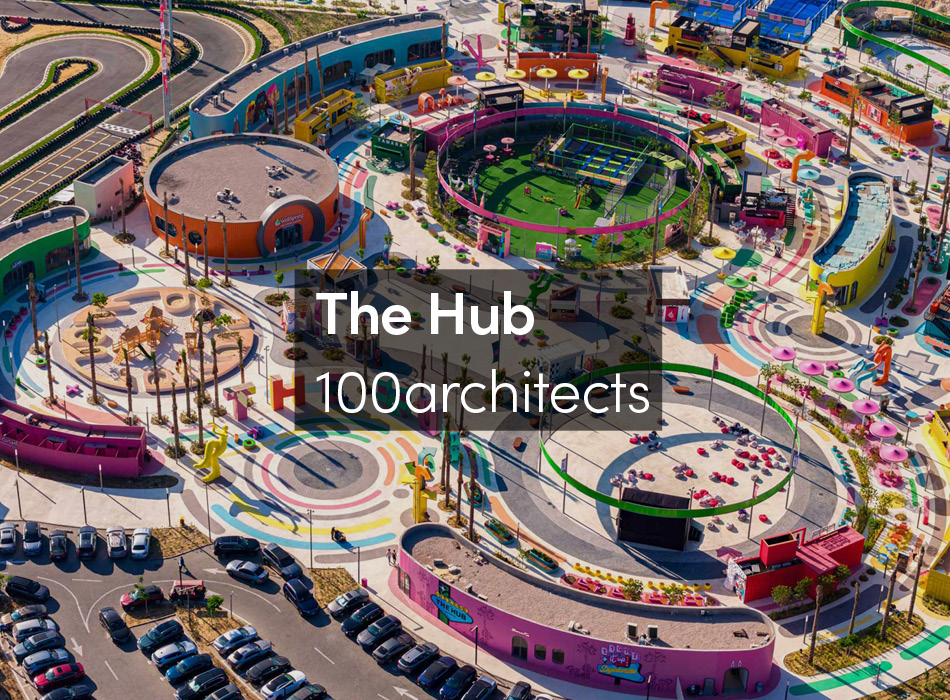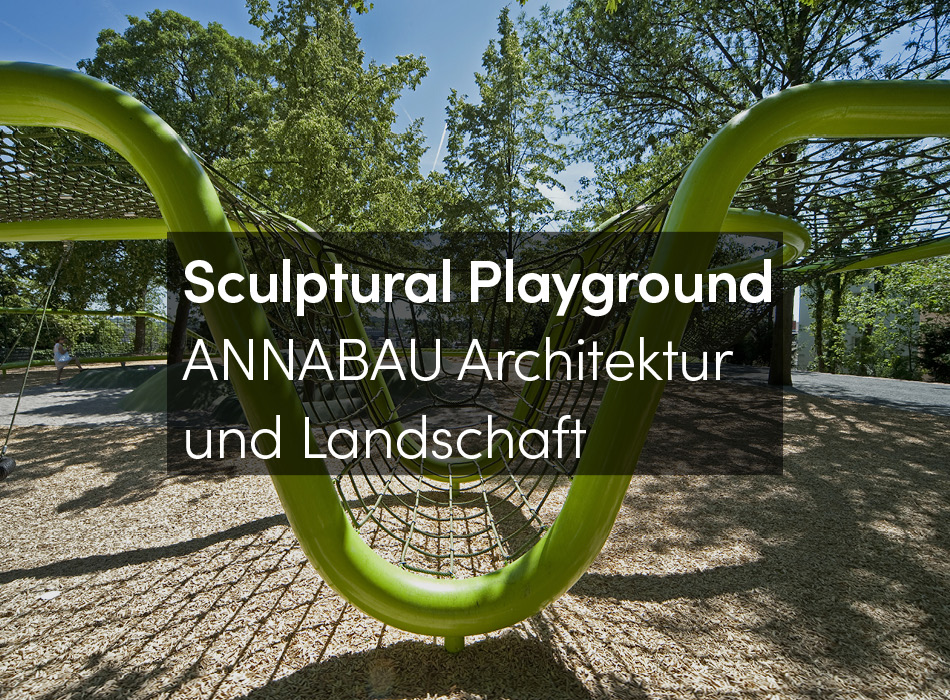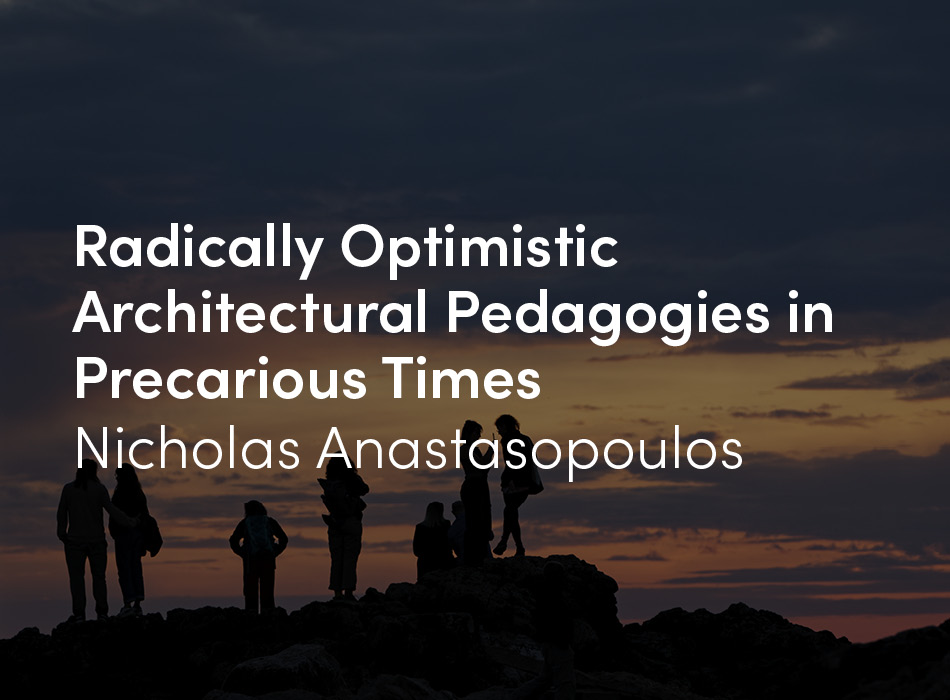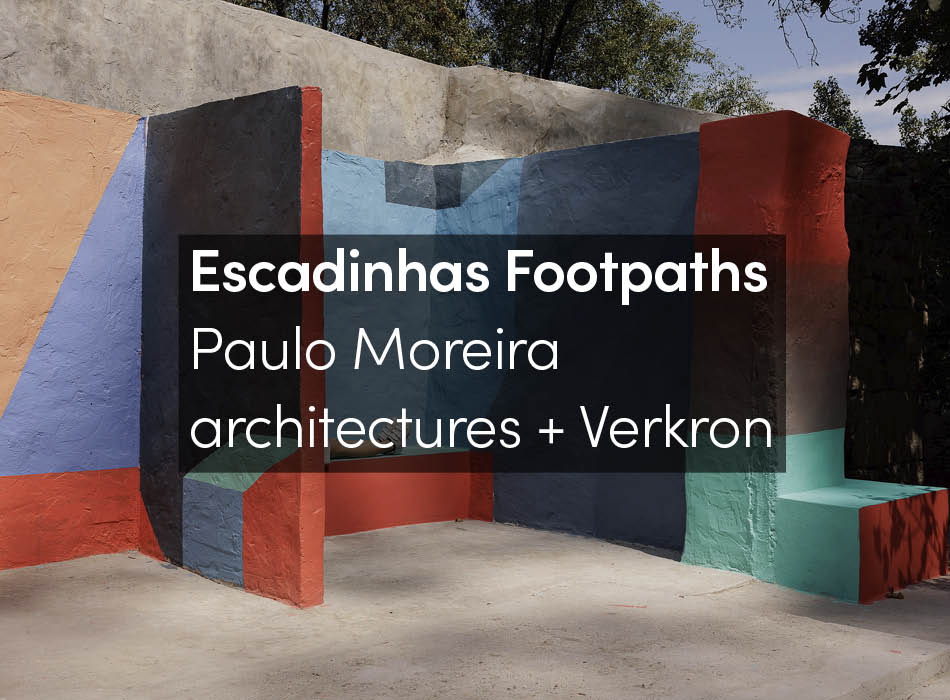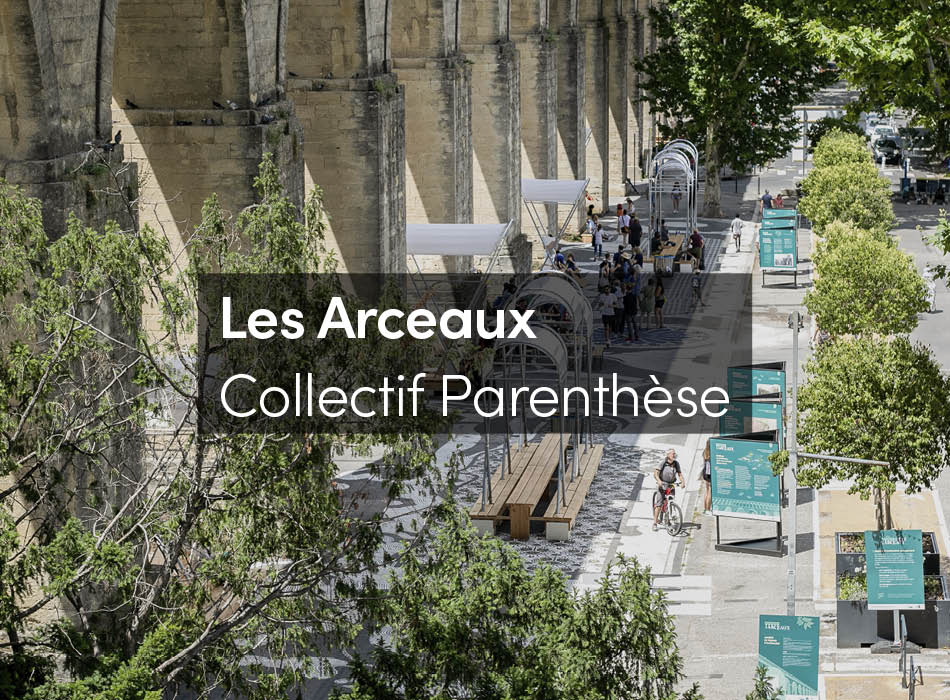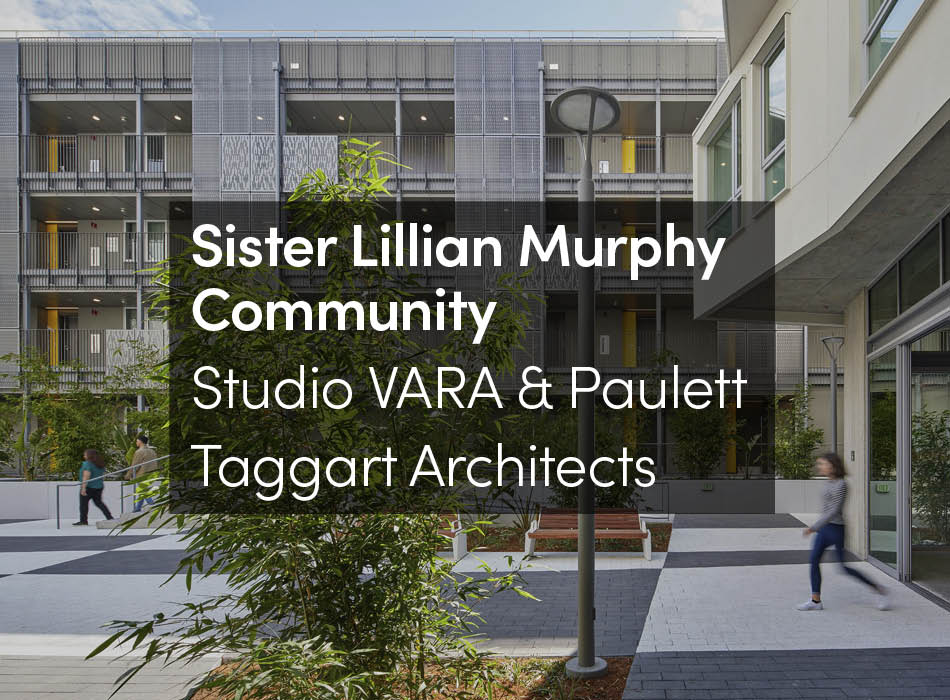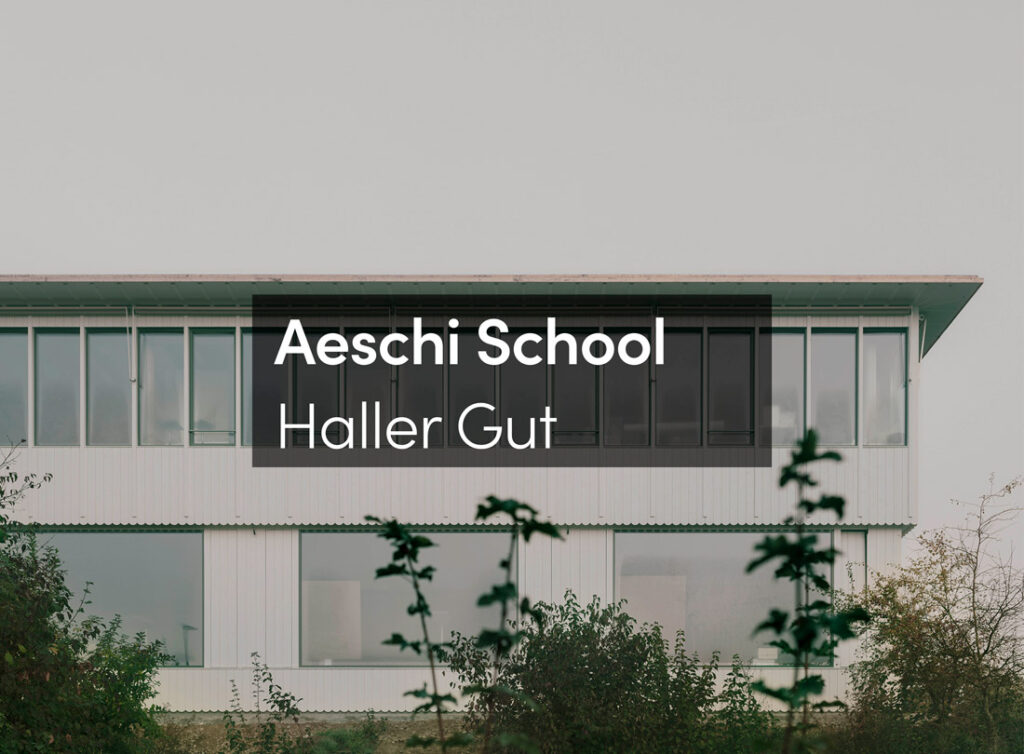The center is located in the Bersive 2 Camp for Internal Displaced Persons (IDPs) in Northern Kurdistan, Iraq. The camp is home to over 7,000 Yazidi people, a minority group subjected to ISIS genocide since 2014. Most camp residents and families have little prospect of a return to their former lives. While the UNHCR (United Nations High Commissioner for Refugees), NGOs, and the Kurdistan government provide basic tents and material support, the camp offers minimal community infrastructure other than schools. The center thus provides a stable oasis for the community.
The project aims were to:
- Develop a functional community and health facility: Design and provision of the functional requirements for the community and health requirements.
- Enable community skills development: Use of participatory construction processes (superadobe) in the construction of the community hall as transferable skills for participants.
- Introduce a circular material resource system: Use of local resources such as earth and discarded glass, helping to establish patterns of a circular material economy and local resource management.
- Strengthen community resilience: Enabling community placemaking and resilience, fostering community pride, contributing to increased cohesion.
- Enhance environmental building principles: Enabling low-tech solutions for passive microclimate design in the thick earth walls of the community hall. This reduces the need for additional heating and cooling with seasonal temperature and humidity cycles, while contributing positively to the hall’s atmosphere.
The multi-purpose community hall is situated on the more public side of the courtyard. The hall has seen numerous uses since it was completed, from informal meetings to larger gatherings and activities. It anchors the center as a whole and provides a recognizable place for cultural and social gatherings. The hall was built using superadobe techniques, relying on earth-filled bags to make a building that contrasts with the predominant materials in the camp (containers, concrete blocks, and tents). Superadobe earth walls offer a number of advantages. First, they provide better thermal conditions for the location, where it snows in the winter and reaches over 30 °C in the summer. Second, they can be built using locally sourced materials, namely earth, in order to reduce costs. They are simple and efficient, structurally stable, and facilitate rapid construction using local resources and unskilled labor. Third, they allow for the on-site training of locals in this type of construction, thus providing transferable skills. In this case, waste bottles were also collected and used by locals to make special windows for the hall.
Healthcare amenities are housed in ready-made containers on three sides of the courtyard, with a covered walkway to reduce overheating and to provide shade. The facilities are used for childcare, dental care, surgical rehabilitation including prosthetics and physical therapy, trauma counseling, women’s groups, education, and language instruction.
A communal courtyard provides a safe space for users, which includes many children. The courtyard is conceived to provide inward-looking spaces suitable for recreation. A playground co-designed by Catalytic Action provides children with the first play space in the camp. It was built to foster the collective spirit among children and increase their sense of belonging.
The collaboration was initiated by HIS Foundation and Habibi International, two NGOs that specialize in health, rehabilitation, and counselling for displaced communities in Northern Iraq. Both had been working in this specific camp and other nearby camps for years. They are also the funders and initiators of the project and manage the day-to-day operations of the center.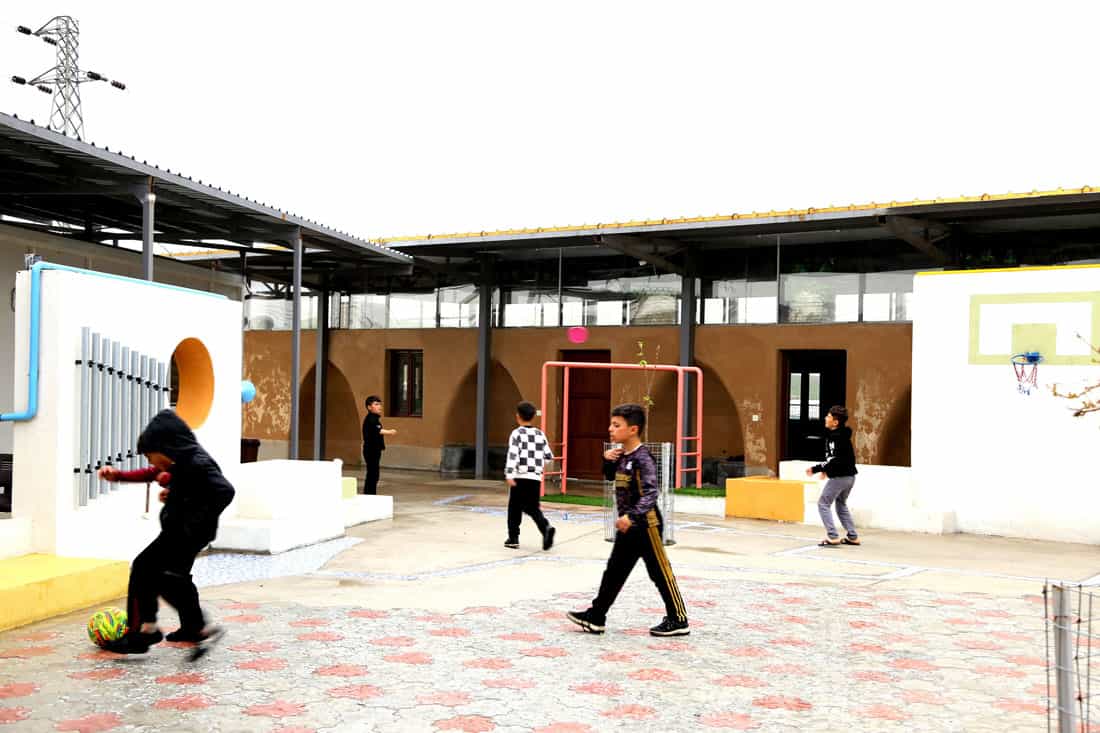
The completed project is notable for being the first non-transitional, non-temporary building in the camp and has attracted significant interest from UNHCR and other NGOs, in addition to recognition in the forms of awards. The project offers new pathways to provide dignified facilities for IDP and refugee camps that fulfil residents’ needs and engage in placemaking for their communities. A prototype superadobe dwelling has been built with community participation in another camp to further test this possibility, and another community center is already under consideration.
